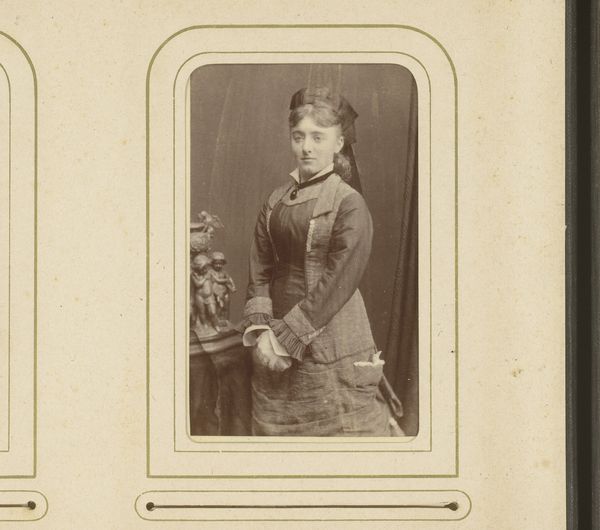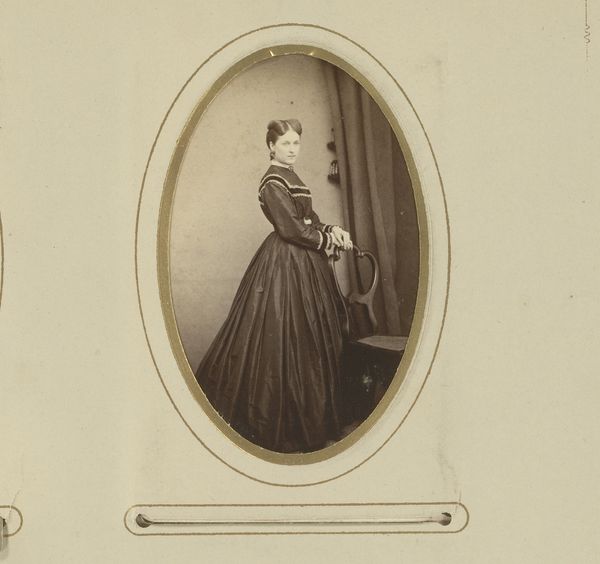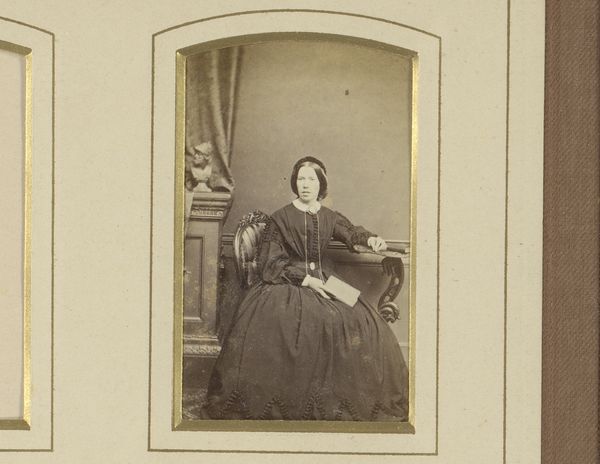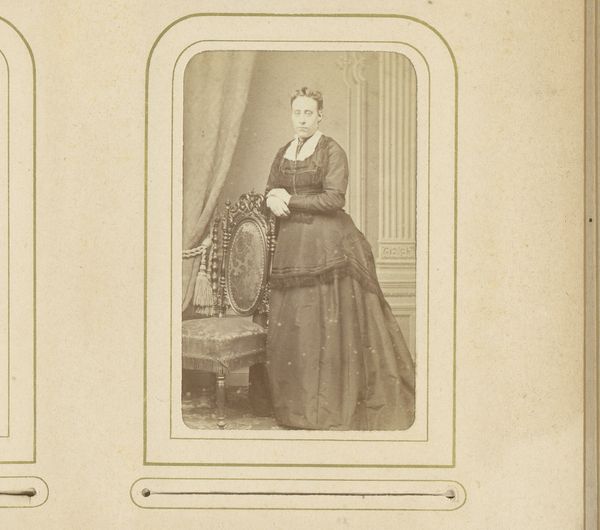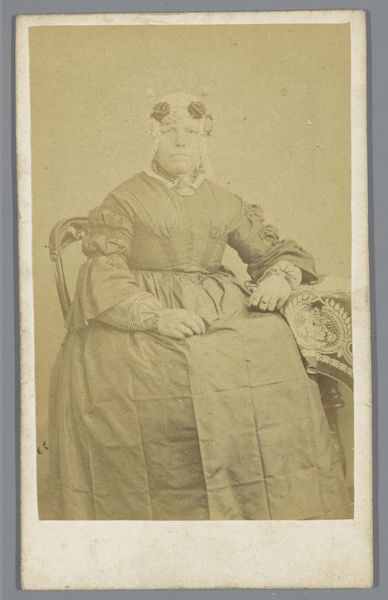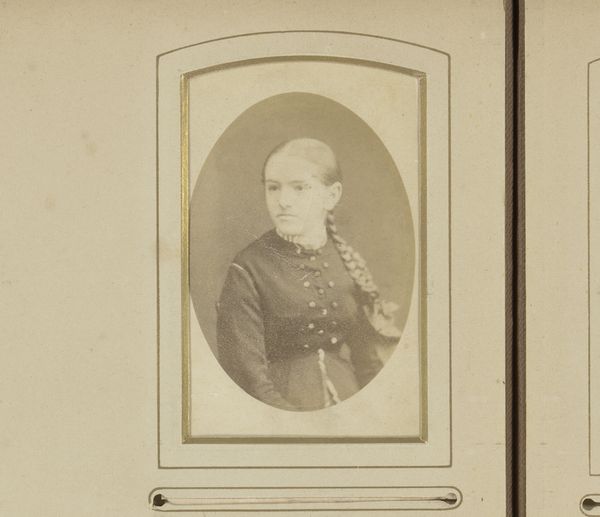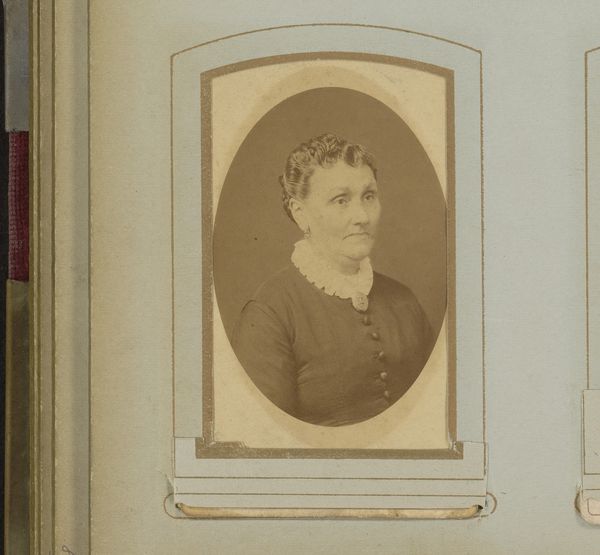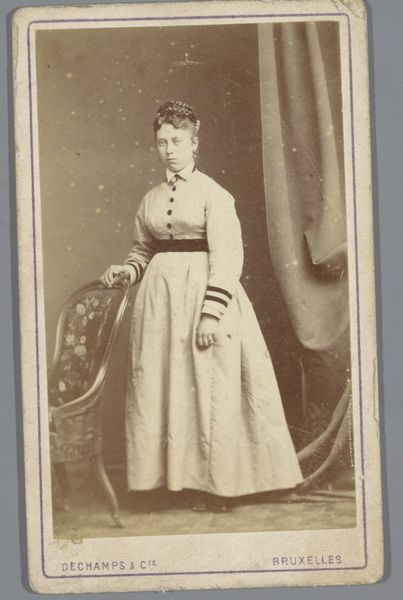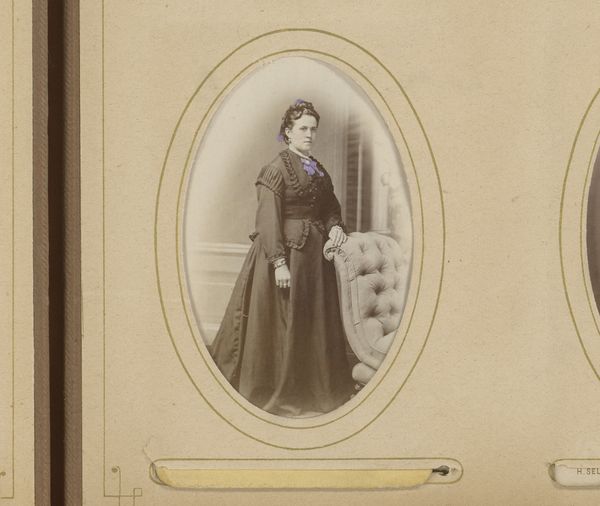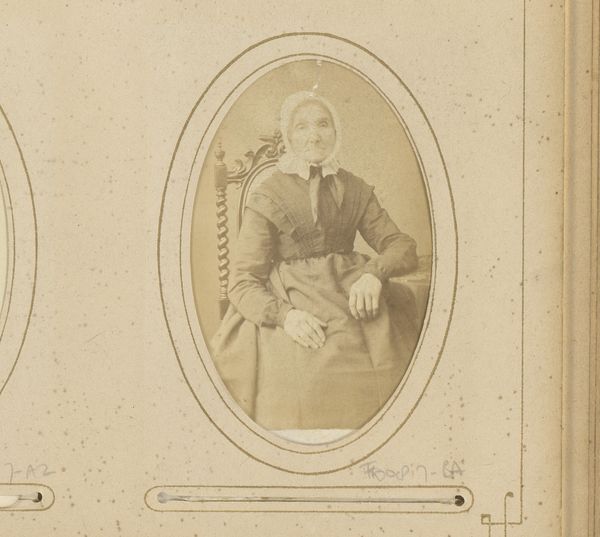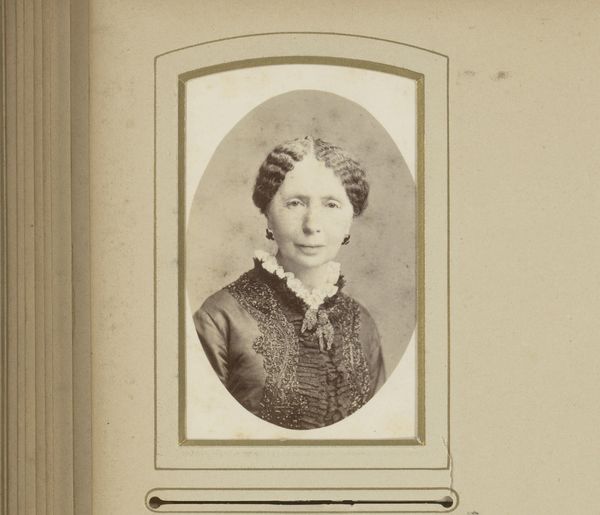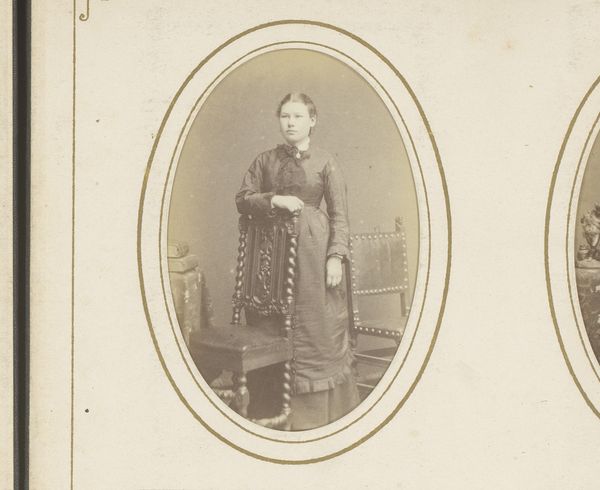
Portret van een zittende vrouw met klederdrachtmuts en oorijzers 1861 - 1866
0:00
0:00
louisrobertwerner
Rijksmuseum
#
aged paper
#
toned paper
#
sculpture
#
charcoal drawing
#
charcoal art
#
historical photography
#
unrealistic statue
#
old-timey
#
19th century
#
statue
Dimensions: height 84 mm, width 51 mm
Copyright: Rijks Museum: Open Domain
Curator: Immediately, I'm struck by the quiet dignity in her face. It feels… very still. Editor: This photograph, titled “Portret van een zittende vrouw met klederdrachtmuts en oorijzers”, or “Portrait of a Seated Woman with Traditional Bonnet and Earrings” in English, comes to us from Louis Robert Werner and dates to between 1861 and 1866. You can find it here in the Rijksmuseum. Curator: Werner's captured more than just a likeness. The detail in her clothing, particularly that striking headpiece... It’s a whole story, isn’t it? Each carefully placed ornament, almost like symbols from another language, makes me wonder about all those untold stories whispering from that photograph, that old-timey feel and aura… Editor: Absolutely. That bonnet and the “oorijzers”, or “ear irons,” are regional markers, you see? They would have communicated marital status, community affiliation, and perhaps even religious identity. These objects aren't simply adornment, they’re part of a visual language that has its emotional, psychological, and cultural meaning as part of historical continuity, giving clues about social hierarchies, beliefs and customs. Curator: And look at her posture - so proper, contained. You can imagine the weight of all those expectations. Still, there’s something in her eyes…a resilience maybe? A touch of mischief. She holds the collective experience within herself, a personal connection to this historical image. Editor: Precisely! It’s that interplay between constraint and individuality that makes these portraits so compelling. Werner manages to imbue what could be a straightforward ethnographic study with this depth. This photograph functions as this capsule, this piece of aged and toned paper, not simply historical documentation but like a silent transmission. Curator: Makes you wonder about her life, the everyday stuff that wouldn’t make it into history books. I mean, what did she dream about? Editor: A beautiful point. These glimpses offer more questions than answers and they bridge past and present for us. Curator: Well said! It felt good, somehow, to let this unknown woman borrow our time today. Editor: Indeed. And I hope that it will prompt some questions as the visitor explores the museum further.
Comments
No comments
Be the first to comment and join the conversation on the ultimate creative platform.
